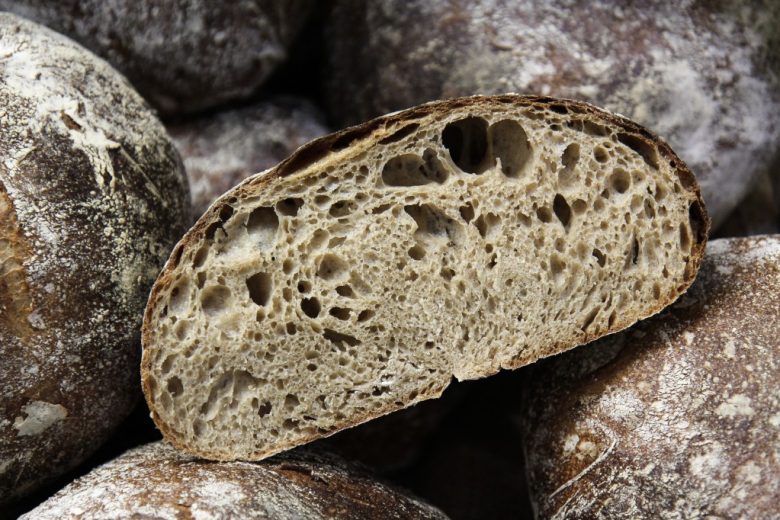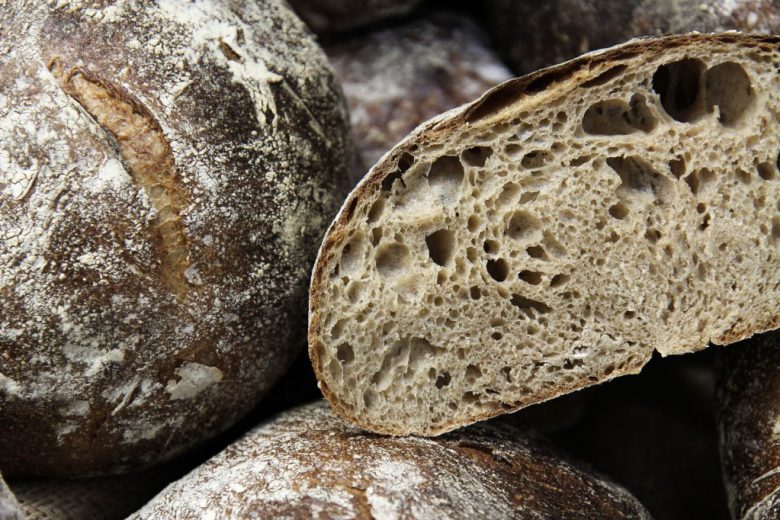Swiss Ruch Bread
Since Swiss contributions were missing from my recipe collection, the Ruch flour from Bongu comes in quite handy. I had heard of Ruchmehl, but I hadn’t baked with it. My first impressions of this flour: high water absorption, strong gluten properties, and wonderful dough development while proofing!
Dried bread crumbs, Ruch flour and Alpine Rye enabled me to have a dough hydration of 190%! This may seem very soft to some, but after folding, the dough grows more stable, going on to become fluffy and supple.
In order to achieve an attractive and regular porosity without additional baker’s yeast, it is important to let the dough rise enough. The final results of baking often fail due to insufficient rise time! If a dough is made without baker’s yeast, it doesn’t matter if it sits for an extra 40-60 minutes before it receives its final working and shaping. What could possibly happen?
There are only advantages to extending the dough’s rise time:
- A more attractive, more even porosity
- A quicker final proof (in most cases the dough can go into the oven after proofing for 45 minutes)
- More flavor
- Stronger oven rise
- Better crust color
- A more controlled oven spring
Recipe
for 2 loaves of Ruch bread, each weighting 611g
Pre-dough with active yeast water:
- 100g yeast water
- 50g water 20°C
- 150g wheat flour type 700
Maturation time (RT): 12 Std Dough temperature (DT): 25°C
or:
Wheat sourdough:
- 145g wheat flour type 700
- 145g water
- 7g starter
Maturation time (RT): 15 Std Dough temperature (DT): 25-27°C
Bread soaker:
- 50g water
- 25g rye wheat type 960
- 1g malt
For instructions, click here.
Main dough:
- 300g mature pre-dough or wheat sourdough
- 400g Ruch flour
- 50g Alpine rye
- 360g water
- 75g bread aroma
- 25g roasted and finely ground bread crumbs
Mix all ingredients and let sit for 30 minutes to autolyze.
- 12g salt
And the salt and mix slowly until the dough falls away from the bowl. As soon as the dough has separated from the bowl, knead quickly for one more minute (stabilizes the gluten structure).
Instructions:
- After making the dough, place it into an oiled tub.
- After 70-80 minutes, fold the dough for the first time (even better: fold the dough only once its volume has increased 50%!)
- After folding, let it rise another 90 minutes.
- Now divide the dough into two pieces of equal size and loosely form each into a round loaf! It is important not to overstress the dough.
- After shaping, place the dough pieces seamside-down on baking paper for the final proof.
- Only once the dough has fully proofed should it be placed into the oven with steam at 250°C.
- After baking for 10 minutes, reduce the temperature to 230°C and bake until well browned. Baking time should NOT be less than 35 minutes.









